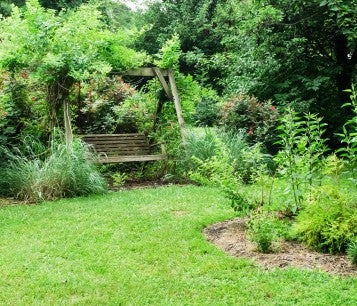In a few short months, the sweet scent of thawing soil will have me searching under trees, by streams and in gardens for new life peeking into the frosty air. During winter’s dark days, it’s hard to imagine anyone more excited about spring’s brave first blooms.
But just below ground, creatures on a more important mission than mine will be getting ready to greet the plants, too. Mother bumblebees will emerge from leaves to start new colonies, timing their arrival for the flowering of Dutchman’s breeches and Virginia bluebells. Ground-nesting bees will dig through the dirt to indulge refined tastes: Andrena erigeniae will turn to her exclusive culinary supplier, spring beauty flowers, to make pollen cakes for her babies; Habropoda laboriosa will seek redbud trees and blueberries. Cavity-nesting bees—who’ve waited in logs and twigs—will also join the party.
As we venture outside, many of us will pass these animals without noticing them. Though everywhere in the landscape, they occupy little space in the cultural mindset, much to the chagrin of scientists. If conservation biologist Rich Hatfield of the Xerces Society for Invertebrate Conservation had to pick one fact people should know about North America’s 4,000 wild bee species, it’s this: “That they exist.”
Their solitary nature, hidden nests and often diminutive sizes have made most bees difficult to observe. “Go back 20 years,” says biologist Olivia Messinger Carril, coauthor of The Bees in Your Backyard, “and the number of people that studied bees could be counted on your hands and your feet, total.” There’s also a disproportionate focus on one species imported from Europe 400 years ago. “Most people, when they think about bees, they have an image that pops into their head, and that’s the honeybee,” says Hatfield.
Critical to current agricultural systems that manage hives for food crops, the domesticated honeybee dominates headlines as beekeepers struggle to stop mass die-offs blamed on disease, mites, habitat loss and pesticides. But just as hard at work are mason bees, mining bees, bumble bees and others whose services have produced fruits and seeds for millennia. They, too, are at risk, dependent on ever-shrinking habitat to accommodate lifestyles that barely resemble those of their captive-raised cousins.
A humane backyard is a natural habitat offering wildlife plenty of food, water and cover, plus a safe place to live free from pesticides, chemicals, free-roaming pets, inhumane practices and other threats. And it's so easy to build!

The needs of wild bees are so different that, as some experts say, raising honeybees to save pollinators is like raising chickens to help birds. Though many homeowners respond to “save a bee” campaigns by purchasing hives, the practice is unlikely to improve honeybee health and may harm other bees. Especially in turf-dominated landscapes, hives increase competition for resources and the risk of disease. All pollinators benefit from habitat enhancement activities like:
Planting diverse native species
While some bees have long tongues to access tubular flowers, those with shorter tongues visit shallower blooms. Many are dietary generalists, but pollen specialists require certain species. Native blooms ensure there’s something for everyone. In my mid-Atlantic yard, violets feed a mining bee known as Andrena violae, and evening primroses satisfy Lasioglossum oenotherae, a sweat bee they host. In the Southwest, cacti provide food for Diadasia bees. Across the continent, asters, goldenrods and sunflowers provide nourishment in autumn as other flowers wane.
Setting up maternity wards
Mother bees ask for little: Most nest alone in sunny dirt patches left unmulched. Some lay eggs in stalks of goldenrod,
Laying down your weapons
Some pesticides contaminate pollen and nectar; others kill on contact. Before grabbing the bottle, observe what’s really happening. For example, holes in roses may be the handiwork of leafcutter bees lining nests with petals and foliage. Instead of treating such phenomena as aggressive acts, be proud that you’re helping generations of bees—and the animals depending on the services these unsung heroes provide.
Want more content like this?
This was written and produced by the team behind All Animals, our award-winning magazine. Each issue is packed with inspiring stories about how we are changing the world for animals together.
Learn MoreSubscribe
